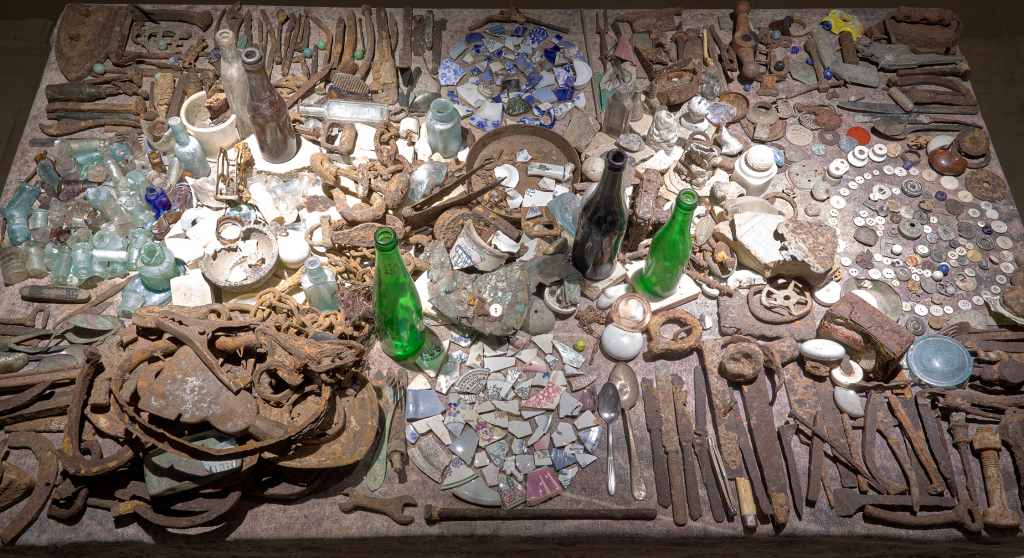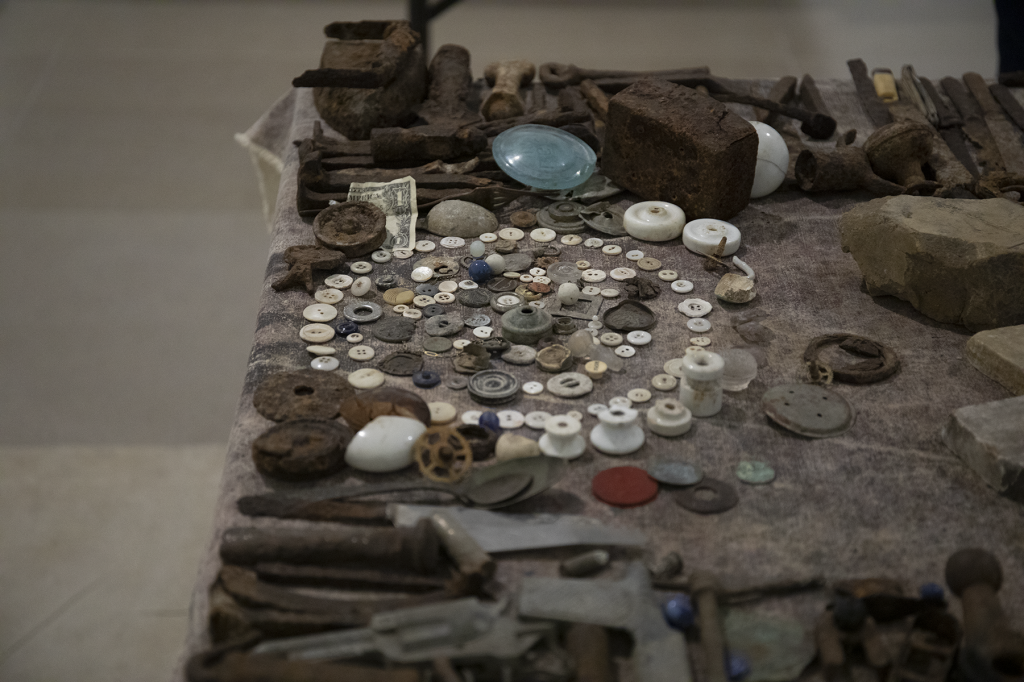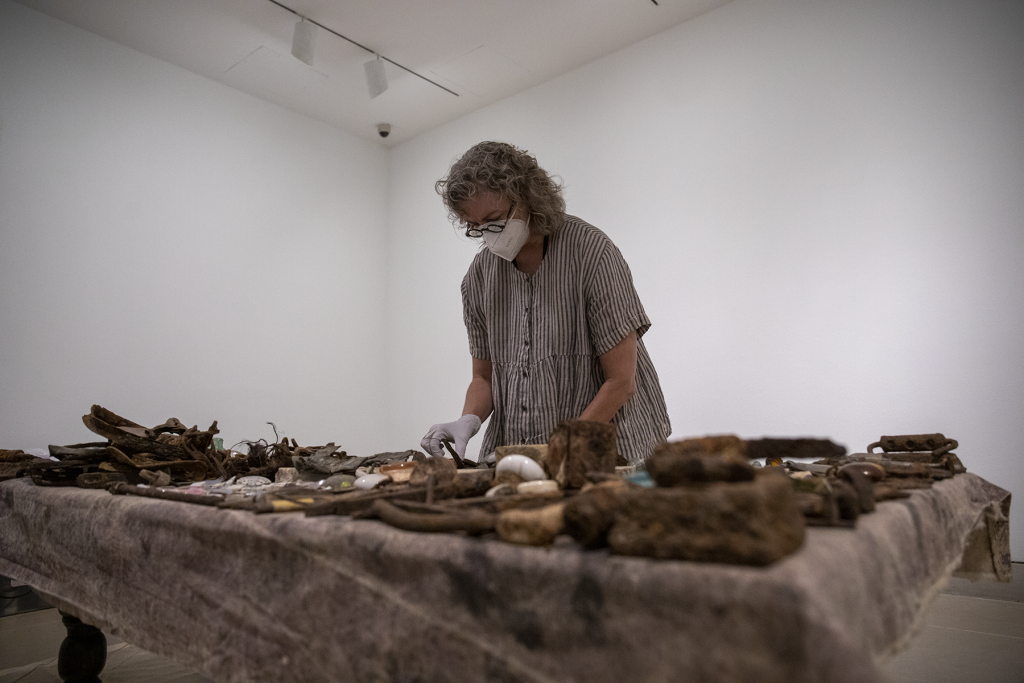Tracy Hicks was a beloved figure in the Dallas arts community when he passed away in 2014 at the age of 68. Having myself moved to the city only in January 2017, I never got a chance to meet him, but his reputation soon reached me as I attempted to immerse myself in the local arts scene. Hicks was a foundational figure in Dallas, where he had lived since he was a toddler, before ultimately moving with his wife, journalist Victoria Loe Hicks, to North Carolina.
In fall 2018, Greg Metz invited me to see a brilliant retrospective of Hicks’s work at UTD’s SP/N Gallery. After walking through several rooms that showcased Hicks’s investigations around the intersection of scientific and archival processes with art, we encountered a light-locked space. Upon turning the corner, Freedman’s Field, a collection of excavated artifacts artfully arranged on a table, lay in resplendent glory. I had known of the work because it was first exhibited at the DMA in 1994 as part of the Encounters series, which keenly paired his work with the YBA artist Damian Hirst.

Seeing it for the first time in person, after being steeped in the artist’s world and regaled with stories of his life and practice through Professor Metz’s fabulous tour, was a revelatory experience. The intense love and care Hicks had shown for these objects, which were repositories of such an important and lesser-known history of my new hometown, was palpable. I instantly fell for it, and knew it belonged back at the DMA, where it could communicate these local histories to visitors in perpetuity.

After that visit, we sought to learn more about the history of Freedman’s Town and its eventual demolition, beautifully explored in scholarship collected in SP/N’s exhibition catalogue, and in a semi-permanent exhibit at Fair Park’s African American Museum. Meanwhile, our collections team got to work learning how to care for such an installation, meeting with those who had cared for it before—including friends Ron Siebler and Nancy Rebal, who had shown the work in a memorial exhibition Rebal organized for Hicks in Corsicana in 2015—and learning firsthand about the myriad of decisions Hicks made in creating the work. As you’ll see, Freedman’s Field is unlike most works you’ll find in an art collection. The typical rules of cataloging just don’t apply here. It is better conceived as an archaeological dig. And Erick Backer, Preparator; Katie Province, Registrar; and Fran Baas, Objects Conservator, bravely undertook the challenge to apply their best professional standards to its care.

The word curator comes from the Latin curare, “to care,” and this work is all about care: the care Hicks showed for the city of Dallas, the care the many local artists we met with showed to Hicks, and our care in honoring those relationships that predated us. My hope is that this work’s testament to that loving care might encourage us to pay closer attention to the world around us so that we can hear the stories it yearns to tell us.
Dr. Anna Katherine Brodbeck is the Hoffman Family Senior Curator of Contemporary Art at the DMA.
Click here to dive deeper into this piece by watching an excerpt from Ron Siebler’s film Remembering Tracy Hicks.
FANTASTIC. Can’t wait to see this.